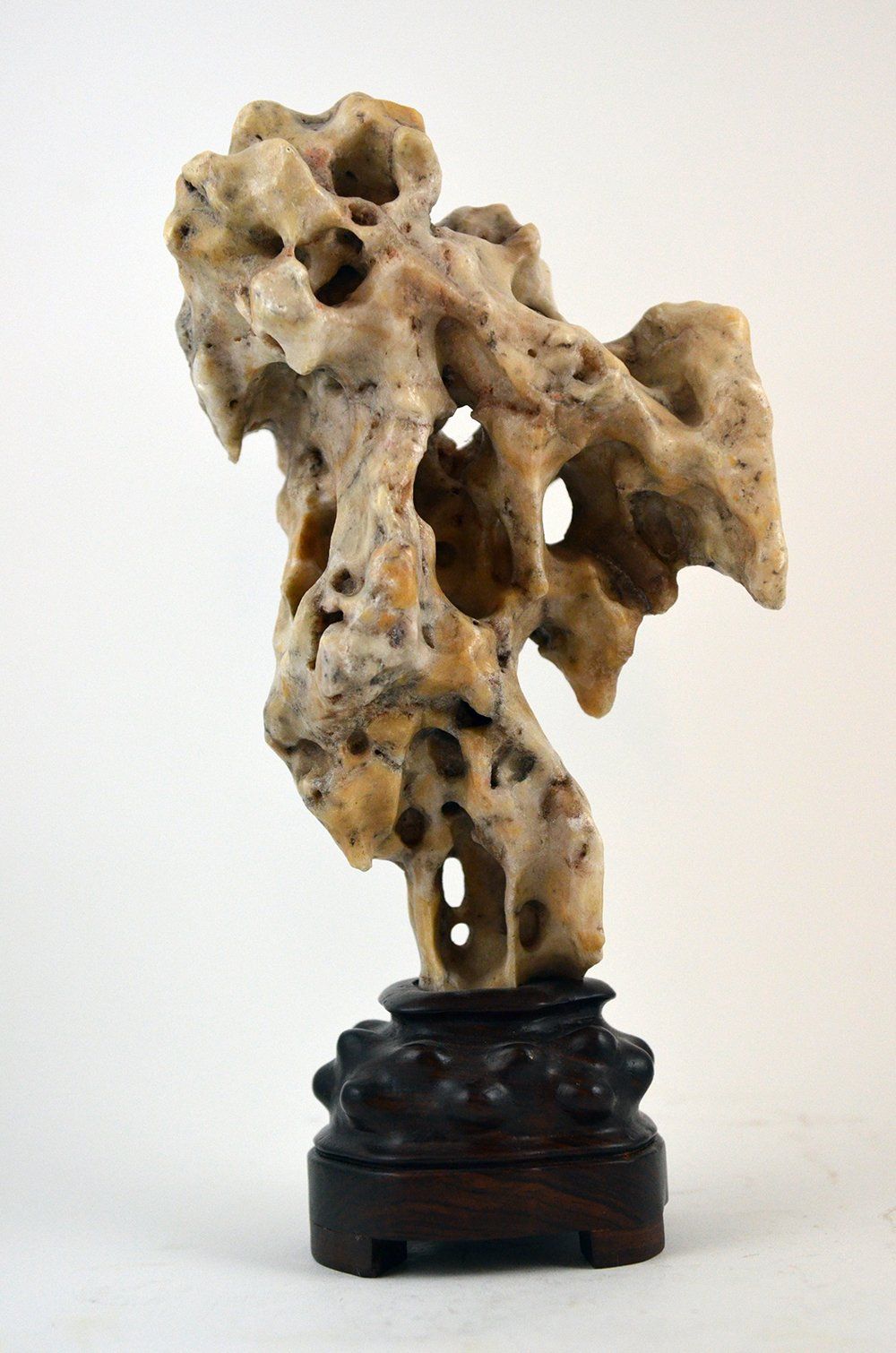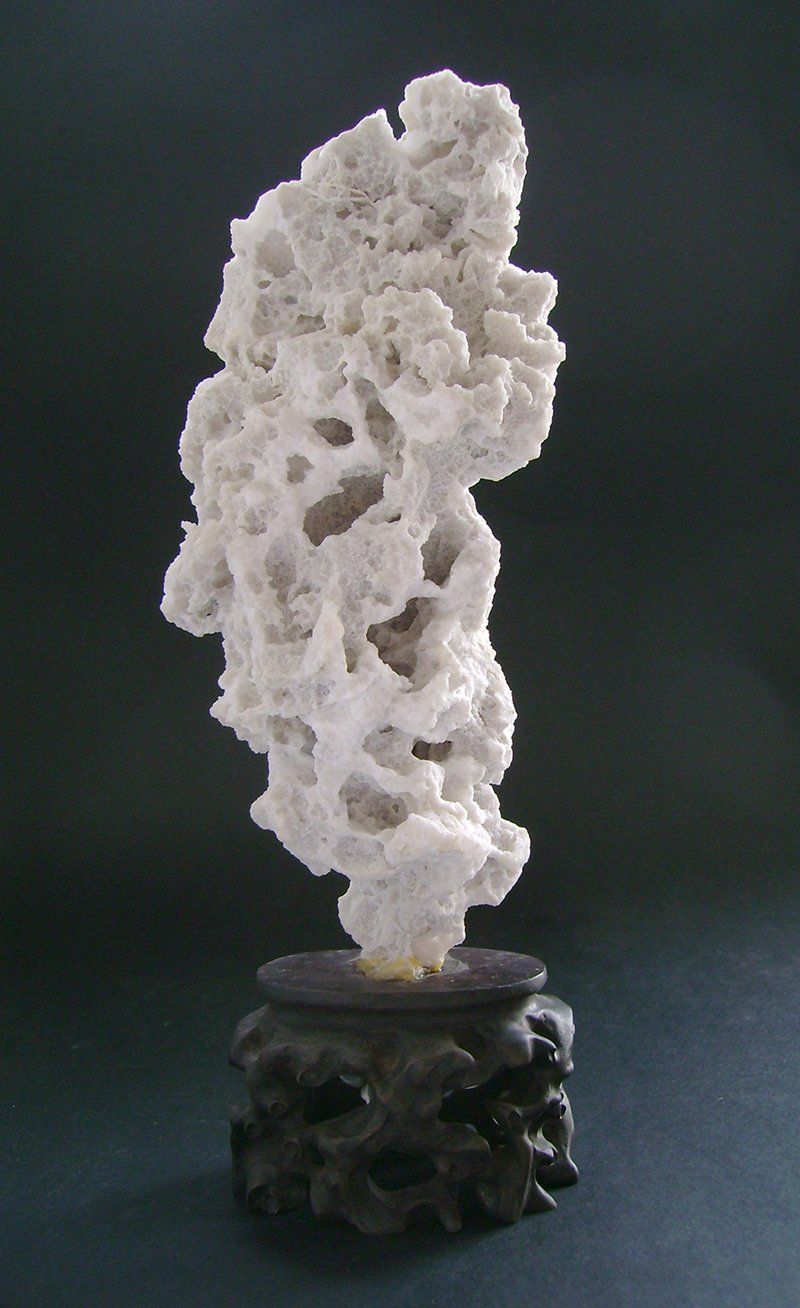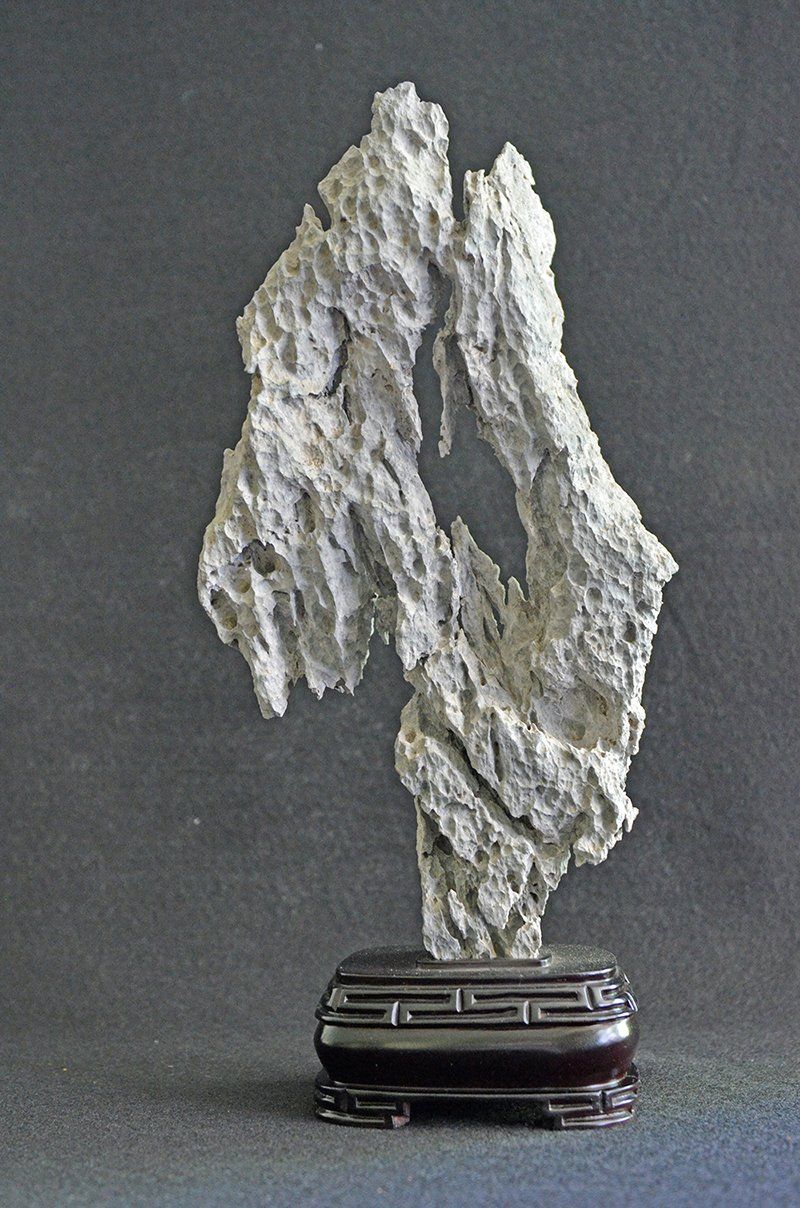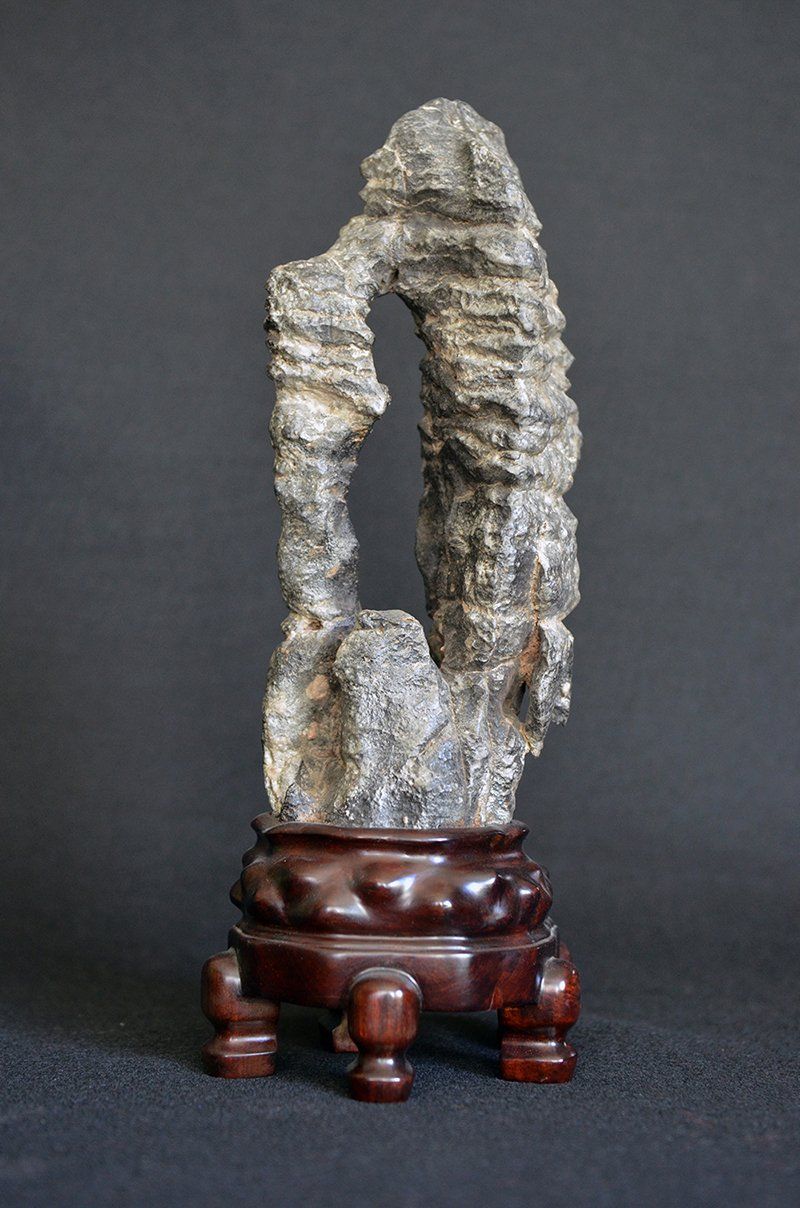Criteria for Evaluating Stones, Part 1
A Guide to the Criteria for Evaluating Stones
By Thomas S. Elias, July, 2013
Today, there are different criteria for evaluating stones in China, some of ancient origin and others of more modern origins. In this two part series, the historical basis for the development of quality criteria will be discussed along with the evolution of modern criteria. It is difficult to apply only one set of characteristics to evaluate the broad ranges of stone types found in modern Chinese stone appreciation circles.
The development of criteria for evaluating stones has an ancient origin. Scholars credit the multi-talented literati Mi Fu (1052-1107/8) with developing the first criteria that was accepted by stone connoisseurs in imperial China. Mi Fu, famous for his calligraphy, was also an avid stone collector and admirer of unusual stones, laid the foundation for appreciating stones when he developed a rhyming four-character set—shou (瘦thinness), lou (漏channels), tou (透holes), and zhou (皱wrinkles).
Despite some variations on this quartet of characters, the four stood the test of time and were adopted by other literati and eventually wealthy merchants in later dynasties. Yuanggong, a Song dynasty writer, modified the criteria somewhat in his book Stone Table by using xiu (elegant), shou, ya (雅graceful), and tou. Later in the Ming dynasty, the words xiu (秀), shou, shu (淑 ), and tou were used by some. Citing the late Qing dynasty Liang Jiutu’s work Chats on Rocks, John Hay noted in his book Kernels of Energy, Bones of the Earth that “the Chinese triad of zhou (surface pattern), shou, and tou were well known in this time. Hay repeated this in a chapter he wrote in the 1995 book, When Men and Mountains Meet. Hay appears to have based his conclusions upon Liang’s work. Hay interpreted zhou as interesting surface patterns, shou as lean diversity of body structure, and tou as perpetual penetrability or eroded holes.
Despite the variations of Mi’s original criteria, his quartet of characteristics survived and are still recognized as important criteria for judging stones, particularly Taihu, Lingbi, Ying, and Kunshan. If a stone possess all four qualities, then they are more highly valued.
A narrower suite of stones were collected and admired in Mi Fu’s Song dynasty than in modern Chinese stone appreciation. Today, approximately 400 different types of stones are incorporated in the broad range of stones collected for their natural features. Many of these stones are boulders or cobbles removed from deep river bottoms while others are products of wind-blown erosion in the desert regions of northern China. Mi Fu’s original characteristics do not apply to these stones. Instead, a modern set of general criteria apply. Then, within each of the major groups such as Yellow Wax, Sanjiang, Dahua, and others, another set of criteria is often used just for and within those specific groups.





